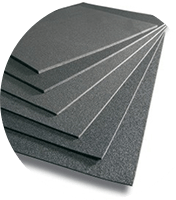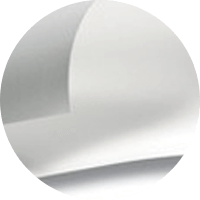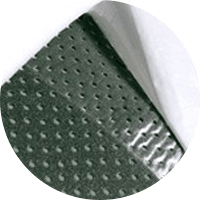The foam
At our manufacturing plants located in Germany, Italy, Hungary, Spain and Malaysia we produce polyolefin foams. Our products are used in various industries like automotive, construction and insulation, leisure and professional sport, adhesive tapes, footwear and packaging.
Despite being active in very diverse industries our solutions are all based on the same principles: light weight, environment friendliness, high quality, stable performance and simplicity.
Usage and Types of Polyethylene Foam
In addition to polystyrene and polyurethane foams, closed cell polyethylene foam is one of the most commonly used foams in industry. It can be used in a number of ways:
- as an insulating material
- as sports equipment
- as an automotive product
- as packaging material
- and even in the footwear industry.
What does PE mean?
PE stands for polyethylene, which is one of the most popular plastic materials. It is available in large quantities, at reasonable cost and has a broad application spectrum. When speaking about PE it covers a large spectrum of different grades which have in common their lightweight and thermoplastic behavior. Differences in the structure make them being adjustable for many applications.
Polyethylene foam is environmentally and skin-friendly, and harmless to the human body.
Extruded polyethylene foam
This foam type, based on polyethylene, is foamed by using an extrusion process, The polyethylene is melted and a gas, typically nitrogen or carbon dioxide is injected. When the melt leaves the machine the injected gas expands and a foam structure is foamed. Extruded polyethylene foams are mainly used as packaging material. This foam type has a closed cell structure which provides good mechanical protection, modifying the flat foam structure into a three-dimensional shape by thermoforming is not possible.
Use: as packaging material
Closed cell cross-linked PE foam
Cross-linked PE foam is flexible and absorbs vibrations thanks to the structure of the foaming material. Its thickness (0,3 – 500 mm) and density (approx. 0.025 – 0.350 g/cm3) are variable, and it is a lightweight material (up to 30 times lighter than water).
Cross-linked foam forms a resistant surface. Cross-linked closed cell polyethylene foam means that during cross-linking, the molecules connect by chemical bonds, forming a three-dimensional structure. This increase the material stability at elevated temperature and is the basis for the following foaming step creating a fine cell and high expanded material. Crosslinking can be initiated in different ways, most common or the use of chemical crosslinking agents or the use of accelerated electrons.
It is also available in fire retardant and conductive variants: the cross-linked polyethylene foam is much more widely used than extruded PE foam. This is also due to the fact that it withstands the rigours of weather, and the cross-linked foam does not react with most chemicals, and is not vapour-permeable. Thus, it can be used to produce a durable insulating material, as it is not consumed by insects or rodents. Its vibration damping effect is particularly high.
Although the ‘PE foam’ is a commonly used name for this material it should be mentioned that not only polyethylene is used but also other materials of the polyolefine group like EVA or polypropylene.
Use:
- as a polyolefin insulation material in the automotive industry, mechanical engineering and architecture (due to its good heat, water and sound insulation)
- due to its vibration damping and absorbing effect, it is also be used to make mattresses and shoe soles
Bio-based cross-linked polyethylene foam
TR-EECell is a bio-based cross-linked polyethylene foam, which is made almost entirely from raw material obtained from biomass (sugar cane). The advantages of the technology are that the obtained polyethylene closed cell foam sheets
- are environmentally friendly to produce
- have a high performance
- are versatile: their applications are the same as those of the traditional PE foam.
The price of polyethylene foam
The price of PE chemical foam is dependent on the following factors:
- foam thickness
- foam density
- shape and size
- self-adhesive or non-self-adhesive
- fire resistance
- colour
The foam we produce
At our manufacturing plants located in Germany, Italy, Hungary, Spain and Malaysia, we produce cross-linked polyolefin foam sheets. As polyolefin foam suppliers, our products are used in various industries such as automotive, production of construction and insulation materials, leisure and professional sports equipment, self-adhesive foams, and in the footwear and packaging industry.
Even though we are active in such diverse areas, our solutions are all based on the same principles: lightweight products, environmentally friendly processes, high quality, consistent performance and simplicity.
The foaming material

Chemical cross-linked foams
Closed cell cross-linked polyethylene foam is manufactured horizontally and in continuous technology
Resistant surface
In many thicknesses and densities
Physical cross-linked foams
 Cross-linked by physical irradiation
Cross-linked by physical irradiation
Manufactured using horizontal or vertical technology
Fine cellular structure and smooth surface
High heat resistant PP foam
In many thicknesses and densities
Processing
Various lamination processes
Self-adhesive coating
Die-cutting
Thermoforming
Perforating and embossing
To learn more about foams, technologies,
check out our Foam Compass, where you will find the answers.
